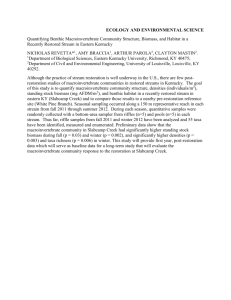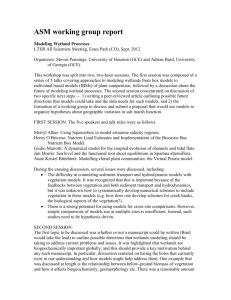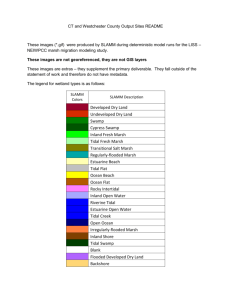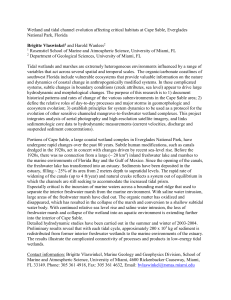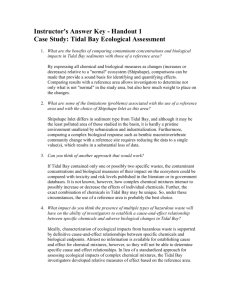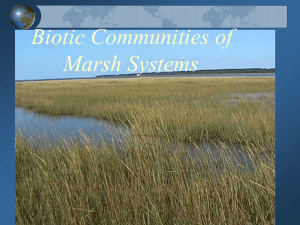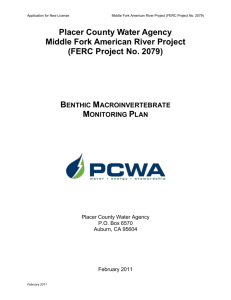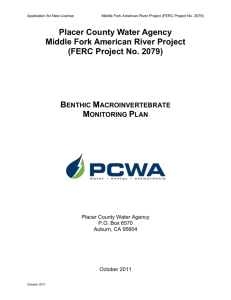Benthic macroinvertebrate communities of reconstructed freshwater
advertisement
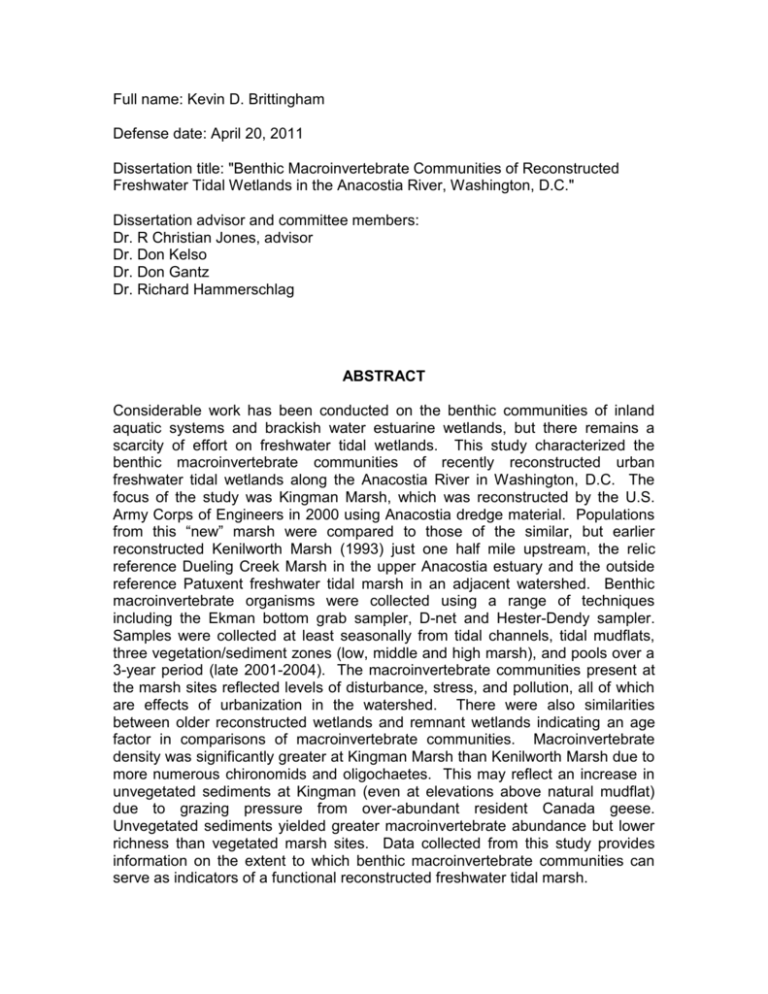
Full name: Kevin D. Brittingham Defense date: April 20, 2011 Dissertation title: "Benthic Macroinvertebrate Communities of Reconstructed Freshwater Tidal Wetlands in the Anacostia River, Washington, D.C." Dissertation advisor and committee members: Dr. R Christian Jones, advisor Dr. Don Kelso Dr. Don Gantz Dr. Richard Hammerschlag ABSTRACT Considerable work has been conducted on the benthic communities of inland aquatic systems and brackish water estuarine wetlands, but there remains a scarcity of effort on freshwater tidal wetlands. This study characterized the benthic macroinvertebrate communities of recently reconstructed urban freshwater tidal wetlands along the Anacostia River in Washington, D.C. The focus of the study was Kingman Marsh, which was reconstructed by the U.S. Army Corps of Engineers in 2000 using Anacostia dredge material. Populations from this “new” marsh were compared to those of the similar, but earlier reconstructed Kenilworth Marsh (1993) just one half mile upstream, the relic reference Dueling Creek Marsh in the upper Anacostia estuary and the outside reference Patuxent freshwater tidal marsh in an adjacent watershed. Benthic macroinvertebrate organisms were collected using a range of techniques including the Ekman bottom grab sampler, D-net and Hester-Dendy sampler. Samples were collected at least seasonally from tidal channels, tidal mudflats, three vegetation/sediment zones (low, middle and high marsh), and pools over a 3-year period (late 2001-2004). The macroinvertebrate communities present at the marsh sites reflected levels of disturbance, stress, and pollution, all of which are effects of urbanization in the watershed. There were also similarities between older reconstructed wetlands and remnant wetlands indicating an age factor in comparisons of macroinvertebrate communities. Macroinvertebrate density was significantly greater at Kingman Marsh than Kenilworth Marsh due to more numerous chironomids and oligochaetes. This may reflect an increase in unvegetated sediments at Kingman (even at elevations above natural mudflat) due to grazing pressure from over-abundant resident Canada geese. Unvegetated sediments yielded greater macroinvertebrate abundance but lower richness than vegetated marsh sites. Data collected from this study provides information on the extent to which benthic macroinvertebrate communities can serve as indicators of a functional reconstructed freshwater tidal marsh.

